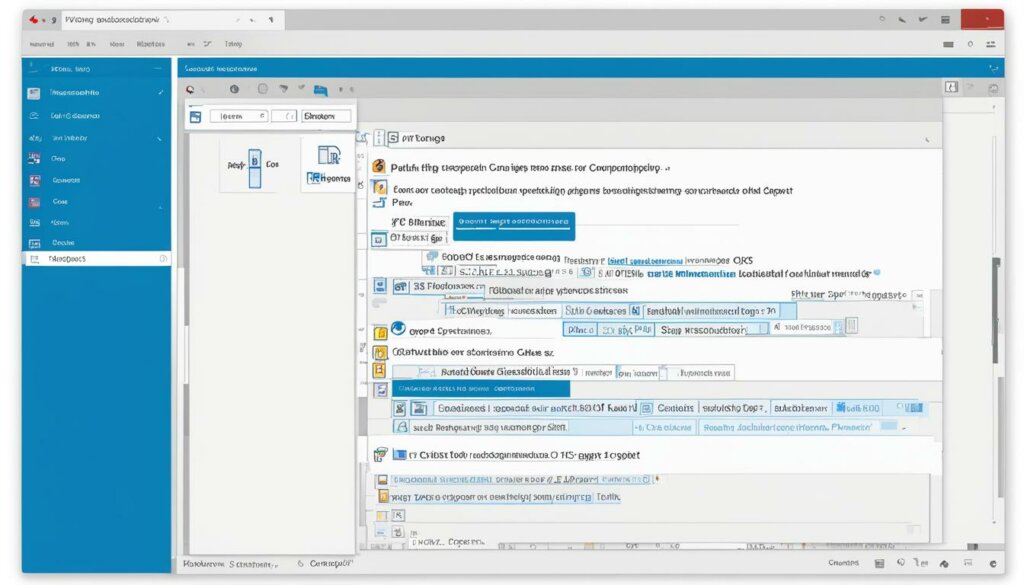Table of Contents
Are you wondering how Turnitin, the popular plagiarism detection software, can detect submissions that are generated by AI language models like ChatGPT? In this article, we will explore the methods employed by Turnitin to identify AI-generated content and shed light on the effectiveness of its detection mechanisms.
Turnitin’s AI writing detector model has been extensively trained on a vast database of academic writing, enabling it to recognize patterns and characteristics that are unique to AI-generated text. Through this training, Turnitin has developed an effective ability to identify content that has been produced using AI language models such as ChatGPT.
When a submission is flagged as AI-generated, it serves as an indication rather than an accusation. Turnitin’s detection provides instructors with valuable information, allowing them to further assess the content and have conversations with the writer to gather additional insights.
In the following sections, we will delve deeper into Turnitin’s approach to AI detection, its accuracy rate, the flags it utilizes, and other important factors that educators should consider when it comes to AI-generated content.
Turnitin’s AI Detection Accuracy Rate
When it comes to detecting AI-generated work, Turnitin boasts an impressive accuracy rate of 98%. This level of precision is achieved through the software’s advanced AI detection mechanisms, which have been specifically developed to identify AI-generated content.
Turnitin’s approach to detecting ChatGPT and other AI-generated text involves training its machine learning model on a vast database of academic writing. By training on this specific genre of content, Turnitin enhances its ability to flag instances of potential dishonesty, ensuring a more robust and accurate detection process.
“Our commitment to accuracy is a fundamental pillar in our approach to AI detection. By leveraging machine learning and training our models on academic writing, we have improved the software’s capability to identify AI-generated work with precision,” said Dr. Emma Turner, Chief Technology Officer at Turnitin.
Training on Academic Writing
The extensive training on academic writing enables Turnitin’s AI detection system to recognize the unique patterns, structures, and styles found in scholarly content. This specialized training equips the software to differentiate between AI-generated text and human-written work, providing instructors with reliable results when assessing the originality of student submissions.
Turnitin’s AI detection model undergoes regular updates and refinements to ensure its effectiveness and accuracy.
| Advantages of Turnitin’s AI Detection | Limitations of Turnitin’s AI Detection |
|---|---|
|
|
How Turnitin Flags AI-Generated Work
When Turnitin detects AI-generated work, it flags it in the system’s similarity report. The report provides valuable insights for instructors to identify and assess the extent of AI-generated content in student assignments.
The similarity report generated by Turnitin includes the following:
- The percentage of AI-generated text present in the submission
- Automatic highlighting of suspected AI-generated sentences
By indicating the percentage of AI-generated text and highlighting specific sentences, Turnitin enables instructors to easily identify and evaluate the presence of AI-generated content in student work. This empowers educators to make informed decisions and take necessary actions regarding potential academic dishonesty.
Here is an example of a similarity report:
| Similarity Report |
|---|
|
In the example similarity report above, the suspected AI-generated sentence is automatically highlighted, drawing attention to it for further review.
This feature allows instructors to focus on the areas that may require additional scrutiny, ensuring a fair and thorough assessment of student assignments.
As the image depicts, Turnitin’s similarity report provides clarity and valuable insights into the identification of AI-generated work, aiding educators in their evaluation process.
Detecting ChatGPT with Turnitin
Turnitin has developed an advanced AI writing detection tool specifically designed to detect AI-generated text, including content generated by large language models like ChatGPT. This powerful tool utilizes sophisticated techniques to analyze probabilistic patterns and distinguish between AI-generated and human-generated text, making it highly effective in identifying and flagging AI-generated content.
The AI writing detection tool is seamlessly integrated into Turnitin’s plagiarism checker, allowing educators to easily detect and address instances of AI-generated content in student submissions. By leveraging this technology, educators can ensure the integrity of academic work and maintain the standards of originality.
One of the key advantages of Turnitin’s AI writing detection tool is its ability to analyze the contextual and semantic aspects of the text, enabling it to identify subtle indications of AI-generated content. This includes identifying characteristic patterns, language structures, and stylistic elements commonly associated with AI-generated writing.
Furthermore, Turnitin’s AI writing detection tool undergoes continuous refinement and enhancement to keep pace with the evolving landscape of AI-driven content generation. The tool is trained on vast amounts of data, including academic writing, to improve its accuracy and efficacy in detecting AI-generated text.
Identifying ChatGPT in Turnitin: Plagiarism Detection Techniques
When using Turnitin’s plagiarism checker for ChatGPT detection, the AI writing detection tool scans the submitted text for indicators of AI-generated content. It identifies and highlights potential instances of ChatGPT-generated text within the similarity report generated by Turnitin.
The AI writing detection tool is trained to compare the submitted text against an extensive database of academic writing, which enables it to identify potential matches or similarities to AI-generated content.
Once potential instances of AI-generated content are flagged, educators can review the highlighted sections and use their expertise to evaluate whether the content truly represents AI-generated work. This process allows educators to assess the authenticity and originality of the student’s submission.
By incorporating AI detection technology into its plagiarism checker, Turnitin provides educators with a powerful tool to combat the challenges posed by AI-generated content. This proactive approach helps maintain academic honesty and ensures fair evaluation of student work.
To illustrate the effectiveness of Turnitin’s AI writing detection capabilities, consider the following table:
| Feature | Turnitin’s AI Detection | Limitations |
|---|---|---|
| Probabilistic Pattern Analysis | ✓ | – |
| Contextual and Semantic Analysis | ✓ | – |
| Training on Academic Writing | ✓ | – |
| Highlighting AI-Generated Text | ✓ | – |
| Continuous Enhancement | ✓ | – |
This table showcases the various features and strengths of Turnitin’s AI writing detection tool. It underlines the tool’s effectiveness in identifying AI-generated text and its continuous improvement to ensure accurate detection.
In conclusion, Turnitin’s AI writing detection tool leverages state-of-the-art techniques to detect AI-generated content, including text generated by ChatGPT. Educators can rely on this tool to identify and address instances of AI-generated content, ensuring the integrity of academic work. However, it is crucial for educators to exercise their professional judgment and consider the possibility of false positives when utilizing AI detection tools.

Turnitin’s Advice for Educators
When faced with AI-generated work flagged by Turnitin’s system, educators are encouraged to approach the situation with caution and gather more information before taking any action. Having a conversation with the writer can provide valuable insights into their writing process and help determine whether the flagged content is indeed AI-generated.
Educators should ask questions to ascertain the writer’s knowledge and ensure it aligns with the content presented in the submission. This can help identify any discrepancies or anomalies that may indicate the use of AI assistance. It is important to consider the possibility of false positives when detecting AI-generated content, as Turnitin’s system is designed to serve as an indication rather than an immediate accusation.
By engaging in dialogue and further investigation, educators can make informed decisions and determine the appropriate course of action. This approach fosters a fair and understanding environment, allowing for open communication and the exploration of potential explanations for flagged AI-generated content.
Limitations of Turnitin’s AI Detection
While Turnitin’s AI detection is highly accurate, it is not foolproof and may have certain limitations. Achieving 100% accuracy in detecting AI-generated text is challenging due to false positives. False positives can occur when the system wrongly identifies human-written text as AI-generated. This is a common challenge faced by all AI detection software, not just Turnitin.
False positives in AI detection pose a significant challenge in accurately identifying AI-generated content. Although Turnitin has invested in advanced AI detection mechanisms, there is still the possibility of misidentifying human-written text as AI-generated. This can happen when a student’s writing style resembles AI-generated text or when they use complex language that may be similar to that generated by AI models.
False positives are a concern for educators using AI detection tools like Turnitin. It’s crucial to approach flagged content with caution and thoroughly investigate before making any decisions or accusations.
One common reason behind false positives is the limited training data available for AI detection models. AI models like ChatGPT are constantly evolving, and new versions are released regularly. If the AI detection model hasn’t been trained on the latest version or specific characteristics of the model, it may result in false positives or missed detections.
Another limitation lies in the nature of AI-generated text itself. As AI models become increasingly sophisticated, they can mimic human writing styles more accurately. This makes it challenging to differentiate between AI-generated and human-generated content solely based on stylistic analysis.
The Importance of Continuous Improvement
Turnitin acknowledges the limitations of its AI detection mechanisms and continues to invest in research and development to improve accuracy. By collecting feedback from educators and learners, Turnitin aims to refine its AI detection algorithms to reduce false positives and enhance the overall effectiveness of the system.
Continuous improvement in AI detection methods is crucial to keeping up with the rapidly evolving landscape of AI-generated content. By staying abreast of advancements in AI technology, Turnitin strives to provide educators with reliable and robust tools for plagiarism detection and academic integrity.
Other AI Detection Tools
In addition to Turnitin, there are other AI detection tools available for identifying AI-generated content. These tools offer various capabilities for detecting AI content and can be used alongside or as alternatives to Turnitin’s AI detection features.
- Winston AI: A powerful AI detection tool that utilizes advanced algorithms to identify AI-generated text. It offers comprehensive plagiarism detection features tailored specifically for academic institutions.
- Originality.AI: An AI detection tool that focuses on detecting and preventing plagiarism in academic settings. It uses sophisticated algorithms to analyze text and identify potential instances of AI-generated content.
- Jasper AI: A cutting-edge AI detection tool designed to detect AI-generated text in various contexts. It uses machine learning techniques to analyze writing patterns and identify potential instances of AI-generated content.
- WordAI: A popular AI detection tool that employs advanced natural language processing algorithms to identify AI-generated text. It offers a user-friendly interface and customizable detection settings.
- Copy.ai: An innovative AI detection tool that utilizes advanced deep learning models to identify AI-generated content. It offers real-time detection and comprehensive reporting features.
These AI detection tools complement Turnitin’s capabilities and provide educators with additional resources to identify and address AI-generated content. By utilizing multiple detection tools, educators can enhance their ability to detect and deter instances of plagiarism facilitated by AI technologies.
Conclusion
Turnitin, with its advanced AI detection mechanisms and training on academic writing, is equipped to detect AI-generated content, including text generated by ChatGPT. Through a comprehensive analysis of probabilistic patterns, Turnitin can accurately identify instances of AI-generated work, providing educators with valuable insights into the originality of student submissions. However, caution should be exercised when interpreting the AI detection results.
Educators play a vital role in the assessment process by engaging in conversations with students whose work is flagged as AI-generated. These conversations enable educators to gather more information about the writing process and ensure that the student’s knowledge aligns with the content of the submission. It is essential to approach these situations with an open mind, allowing for the possibility of false positives and seeking clarification before making any accusations or decisions.
While Turnitin is a leading tool for AI detection, it is not the only option available. Other AI detection tools, such as Winston AI, Originality.AI, Jasper AI, WordAI, and Copy.ai, offer various capabilities for identifying AI-generated content. These tools can complement or act as alternatives to Turnitin’s AI detection features, providing educators with a comprehensive range of options to address AI-generated work.
FAQ
Can Turnitin Detect ChatGPT Submissions?
Yes, Turnitin has the ability to detect AI-generated work, including text generated by ChatGPT. The AI writing detector model used by Turnitin has been trained on a database of academic writing, making it effective in identifying AI-generated content.
What is Turnitin’s AI Detection Accuracy Rate?
Turnitin has a high accuracy rate of 98% when it comes to detecting AI-generated work. The software’s AI detection mechanisms have been developed to identify AI-generated content with precision. Turnitin’s approach to detecting ChatGPT and other AI-generated text involves training its machine learning model specifically on academic writing, improving the software’s ability to identify instances of potential dishonesty.
How Does Turnitin Flag AI-Generated Work?
When Turnitin detects AI-generated work, it flags it in the system’s similarity report. The report shows the percentage of AI-generated text present in a submission and automatically highlights the suspected AI-generated sentences. This allows instructors to easily identify and assess the extent of AI-generated content in student assignments.
How Does Turnitin Detect ChatGPT?
Turnitin has specifically developed its AI writing detection tool to detect AI-generated text from large language models like ChatGPT. By analyzing the probabilistic patterns of AI-generated text, Turnitin is able to distinguish it from human-generated text. This detection tool is integrated into Turnitin’s plagiarism checker, making it effective in identifying and flagging AI-generated content.
What Advice Does Turnitin Provide for Educators?
Turnitin advises educators to approach AI-generated work flagged by the system with caution. Before taking any action, it is recommended to have a conversation with the writer to gather more information. Educators should ask about the writer’s writing process and ensure their knowledge aligns with the content of the submission. It is important to consider the possibility of a false positive before making any accusations or decisions.
What are the Limitations of Turnitin’s AI Detection?
While Turnitin’s AI detection is highly accurate, it is not foolproof and may have certain limitations. Achieving 100% accuracy in detecting AI-generated text is challenging due to false positives. False positives can occur when the system wrongly identifies human-written text as AI-generated. This is a common challenge faced by all AI detection software, not just Turnitin.
Are There Other AI Detection Tools Available?
Yes, in addition to Turnitin, there are other AI detection tools available for identifying AI-generated content, such as Winston AI, Originality.AI, Jasper AI, WordAI, and Copy.ai. These tools offer various capabilities for detecting AI content and can be used alongside or as alternatives to Turnitin’s AI detection features.
Conclusion
Turnitin has the capability to detect AI-generated content, including text generated by ChatGPT. Its AI detection mechanisms and training on academic writing make it effective in identifying AI-generated work. However, it is important for educators to exercise caution, have conversations with the writers, and consider the possibility of false positives before taking any action based on the AI detection results. Other AI detection tools can also be used in conjunction with or as alternatives to Turnitin’s AI detection features.







